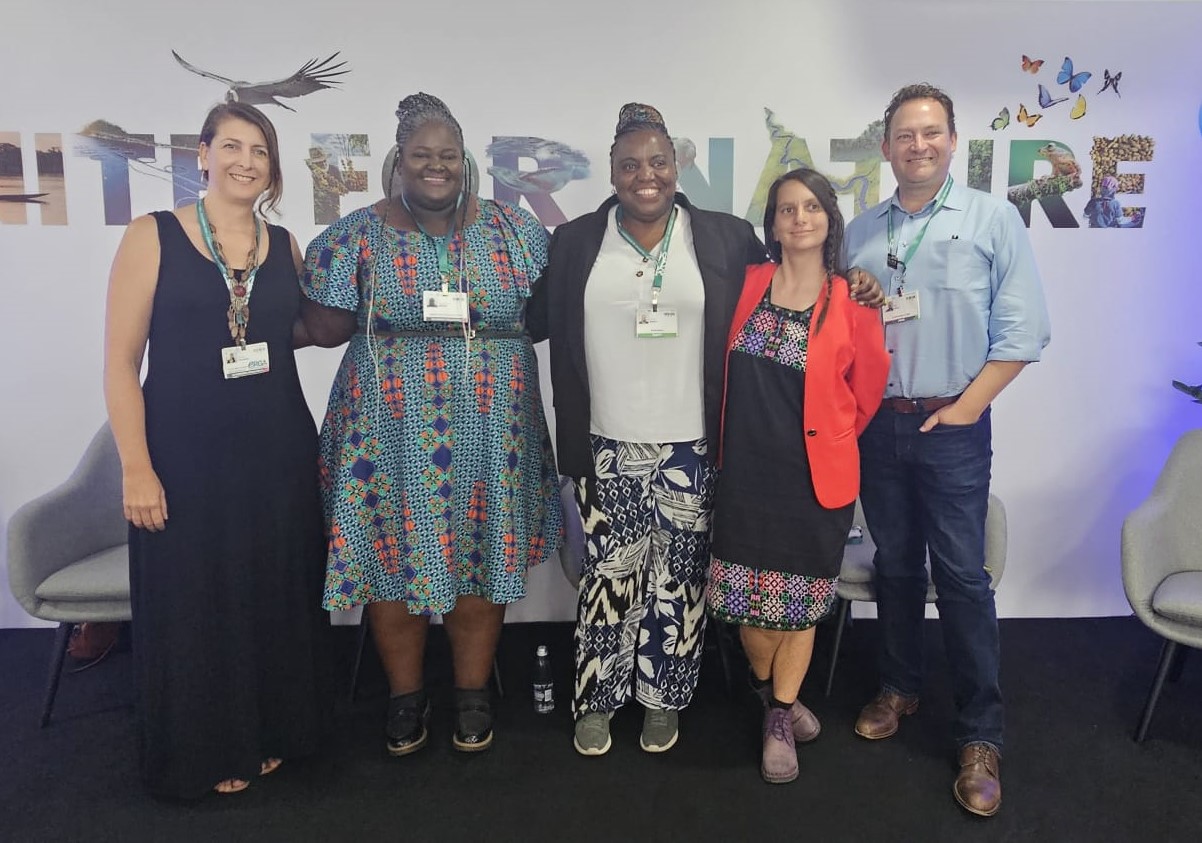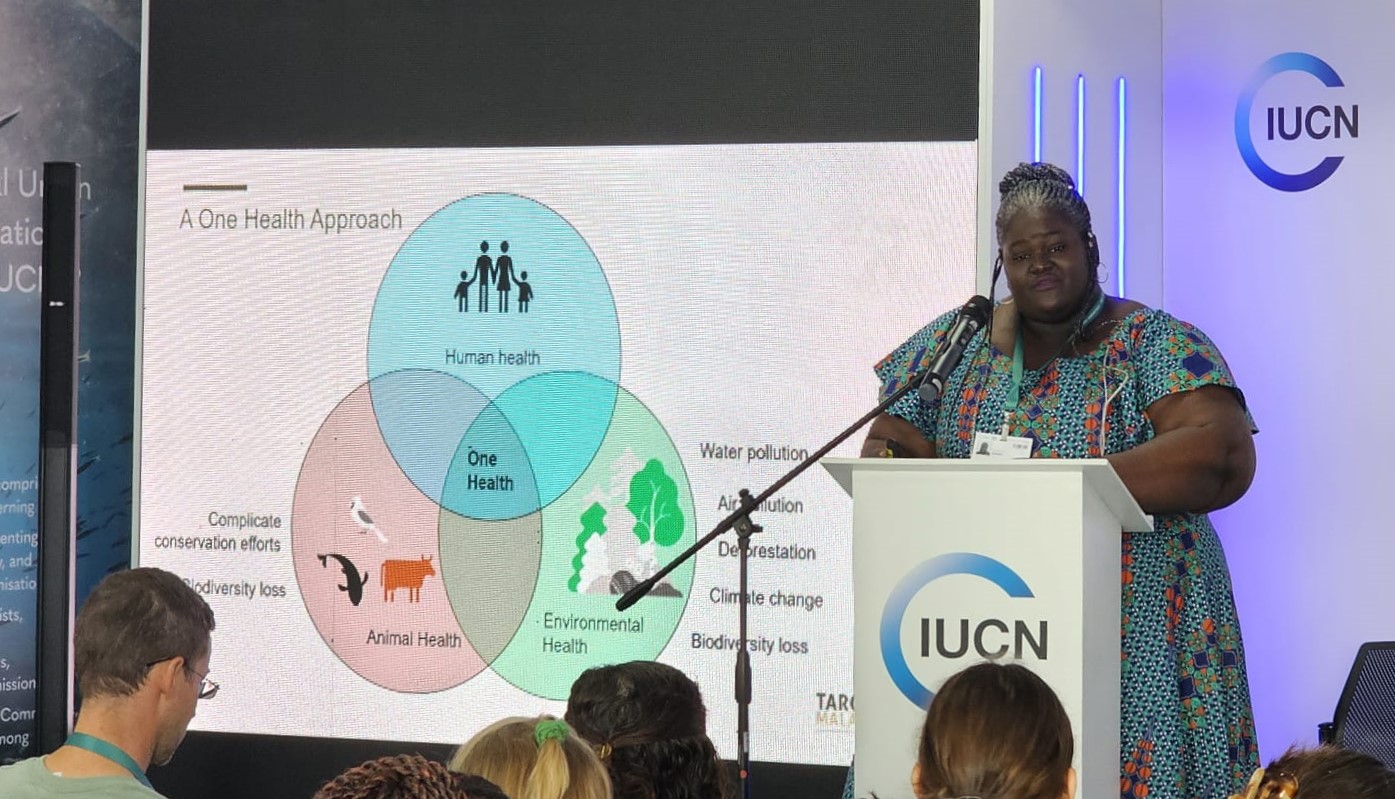I recently had the pleasure of speaking at an insightful event, held at the IUCN Pavilion during the Sixteenth meeting of the Conference of the Parties to the Convention on Biological Diversity (CBD) in Cali, Colombia. The aim of the panel was to explore how new tools can complement existing conservation efforts and help protect biodiversity and achieve sustainable development. With biodiversity declining at an alarming rate, the need for innovation to address this crisis has never been more urgent.

Speakers and moderator of the event at the IUCN Pavilion: Considering opportunities of new tools for conservation
The event was moderated by Camila Mazzoni from the Leibniz Institute for Zoo and Wildlife Research, who opened the session by underscoring the conservation challenges we are facing today – from rapid biodiversity loss to the growing impact of climate change and human activities on ecosystems. She highlighted the importance of innovation, noting that while traditional approaches for conserving biodiversity are essential, they are not enough to keep up with evolving challenges.
My presentation focused on the use of genetic tools to control malaria in Africa and the importance of adopting a One Health approach, which recognizes that human health, animal health and environmental health are closely connected. Malaria, and efforts to fight the disease, are a great example of these interlinkages: current mosquito control measures, such as reducing household water sources, spraying insecticides, and clearing vegetation, are vital to protect human health, yet contribute to pollution and environmental strain. As climate change progresses, warmer temperatures are also expanding malaria mosquito habitats, increasing the likelihood of invasive species that can threaten both human and animal health.

Krystal Birungi, Target Malaria, highlighting the importance of a One Health approach to tackle the current biodiversity and health crises
With over 200 million malaria cases globally — and over 90% in Africa — our reliance on current tools alone is increasingly unsustainable. Uganda, my home country, is among those most heavily impacted, with cases rising in 2022 for the first time in years. So how can we address this major health crisis while protecting biodiversity? At Target Malaria, we are developing a tool called gene drive technology which has the potential to control malaria-carrying mosquitoes while minimizing impacts on biodiversity. As they are species-specific, and target only the malaria mosquitoes responsible for transmitting the disease, gene drive technologies could provide a sustainable solution to controlling vector-borne diseases like malaria.
The session included three other experts at the forefront of their respective fields. Paul Bunje, Conservation X Labs, discussed how they are leveraging artificial intelligence (AI) to support wildlife monitoring and help protect biodiversity. Alicia Mastretta-Yanes, The Coalition for Conservation Genetics, shared her work on developing and implementing indicators for monitoring and reporting genetic diversity. Monica Mwale, South African National Biodiversity Institute (SANBI), highlighted current developments in the use of genetic tools to map wildlife population dynamics and help us better understand species and population diversity. Together, we explored how innovation can be used to advance the sustainable use and conservation of biodiversity.
The event underscored the pivotal role of innovation in tackling the complex challenges of biodiversity conservation. From genomics to data analytics and AI, the discussions showcased the diverse ways emerging technologies can complement and enhance traditional approaches. With biodiversity facing mounting challenges from climate change and human activity, it is clear that a collaborative and integrated approach is essential to create solutions that are both impactful and sustainable for future generations.
